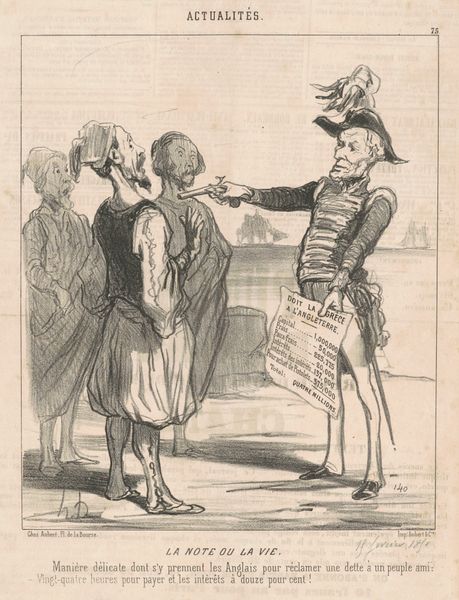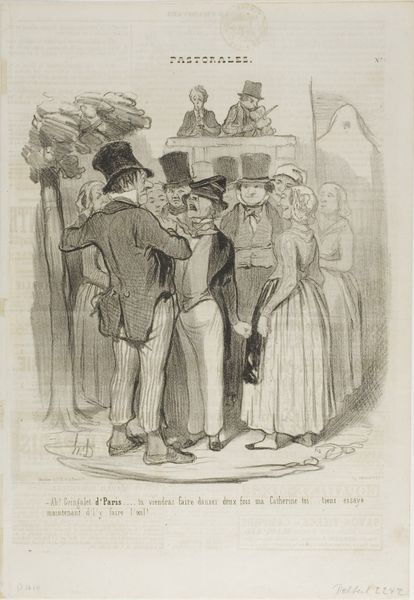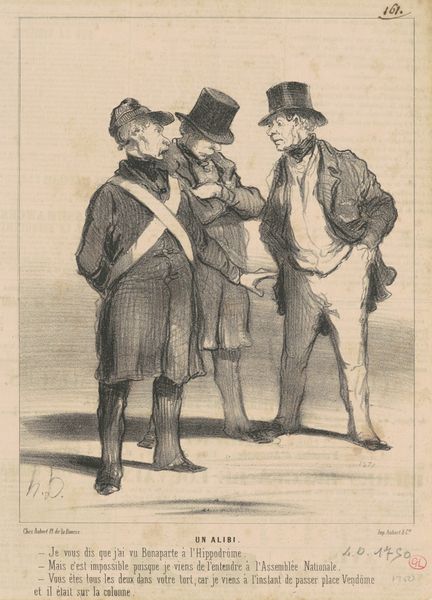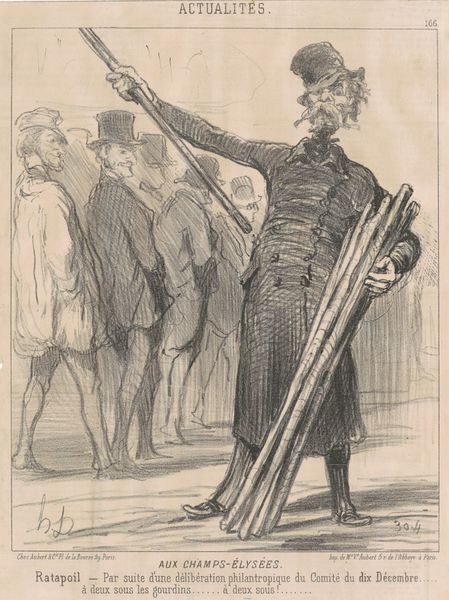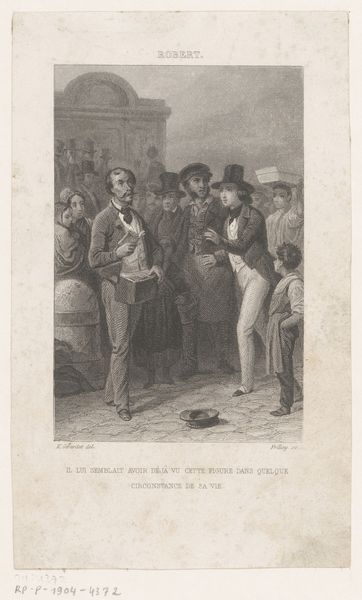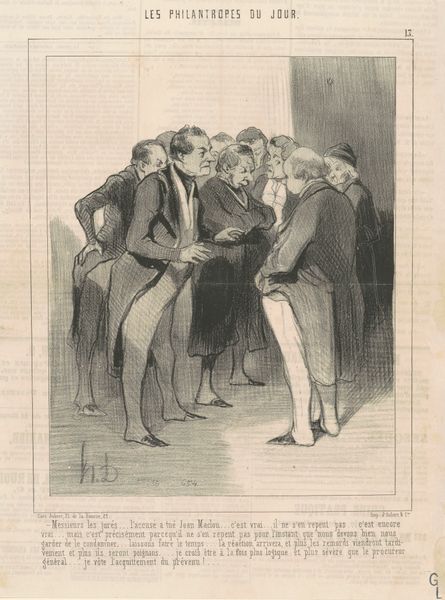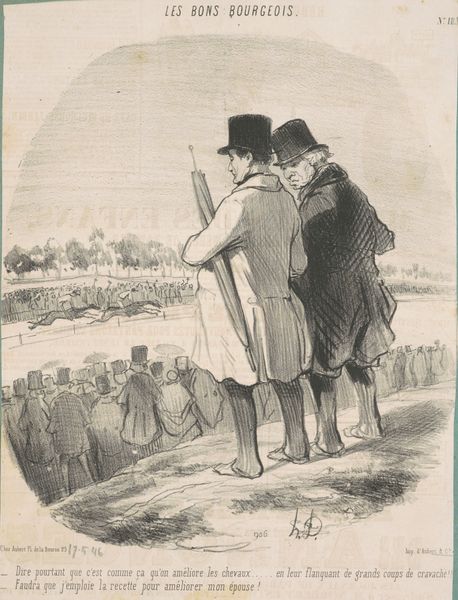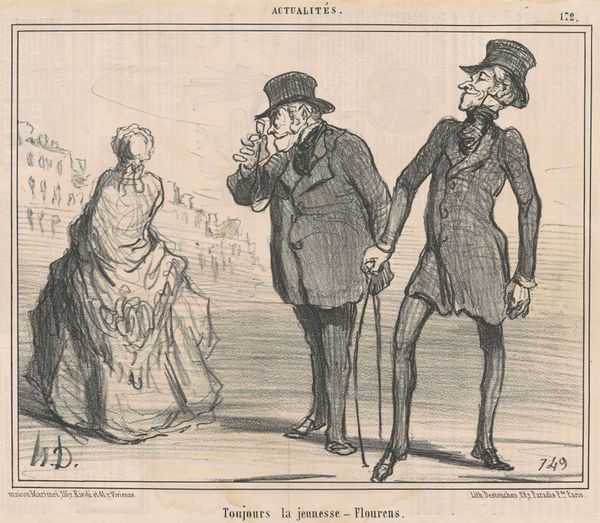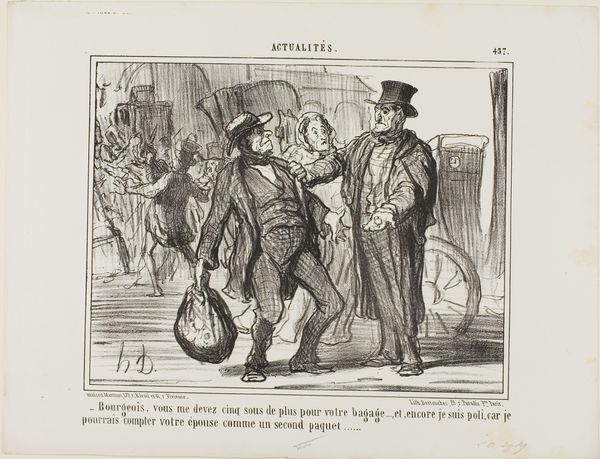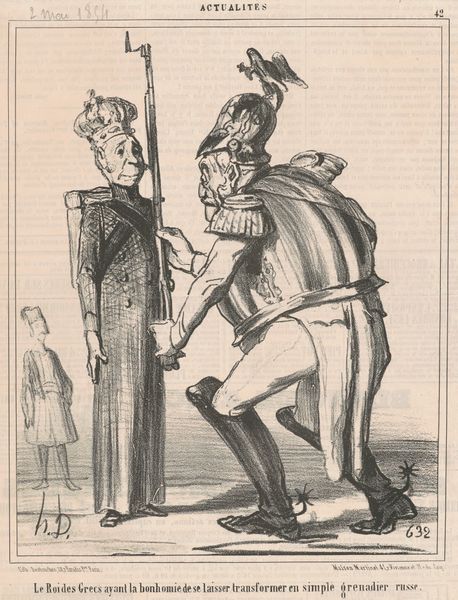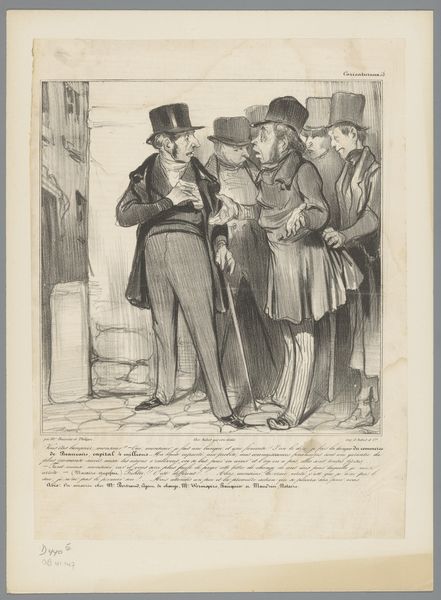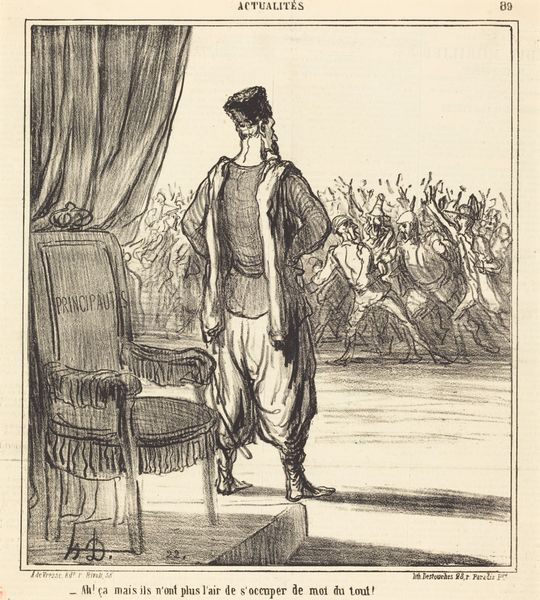
Rifolard ... oublie ... les inconvénients de la traversée c. 19th century
0:00
0:00
drawing, lithograph, print, pen
#
drawing
#
lithograph
# print
#
caricature
#
figuration
#
social-realism
#
pen
#
genre-painting
#
realism
Copyright: National Gallery of Art: CC0 1.0
Editor: This is Honoré Daumier's lithograph, "Rifolard ... oublie ... les inconvénients de la traversée," from around the 19th century. It strikes me as darkly humorous – almost sardonic – the way this stern-looking figure dominates the scene, observed by these smaller characters. How do you read this work? Curator: I see it as a commentary on class and power structures in 19th-century France. Daumier often used caricature to critique the bourgeoisie, and here we have a figure of authority, likely representing the political elite, seemingly oblivious to the discomfort or hardship implied in the title – "Rifolard forgets the inconveniences of the crossing". Editor: So, the 'crossing' implies some kind of difficulty, like a journey or perhaps a social struggle? Curator: Precisely. The surrounding figures, with their exaggerated features and expressions, seem to represent the common people, perhaps gazing with a mix of awe and skepticism. The composition itself reinforces this divide – the central figure is large and imposing, while the others are smaller and clustered around him. How does that power dynamic strike you? Editor: It does feel very staged, like a political spectacle. The way everyone's looking up, especially those children... It almost feels like they're forced to admire him. Curator: Yes! And that's the core of Daumier's critique. He is laying bare the theatricality of power and the manipulation of public perception. The print becomes a tool to show how images shape opinion, how public figures perform for the masses, and the social realities obscured in the process. Editor: I didn’t consider it as a political statement at first, but your points about class and public perception made a lot of sense. It really makes me appreciate the political undercurrent in art from this era. Curator: Absolutely. Looking at art through this historical lens opens a whole new perspective, demonstrating the critical role art plays in understanding societal dynamics.
Comments
No comments
Be the first to comment and join the conversation on the ultimate creative platform.
